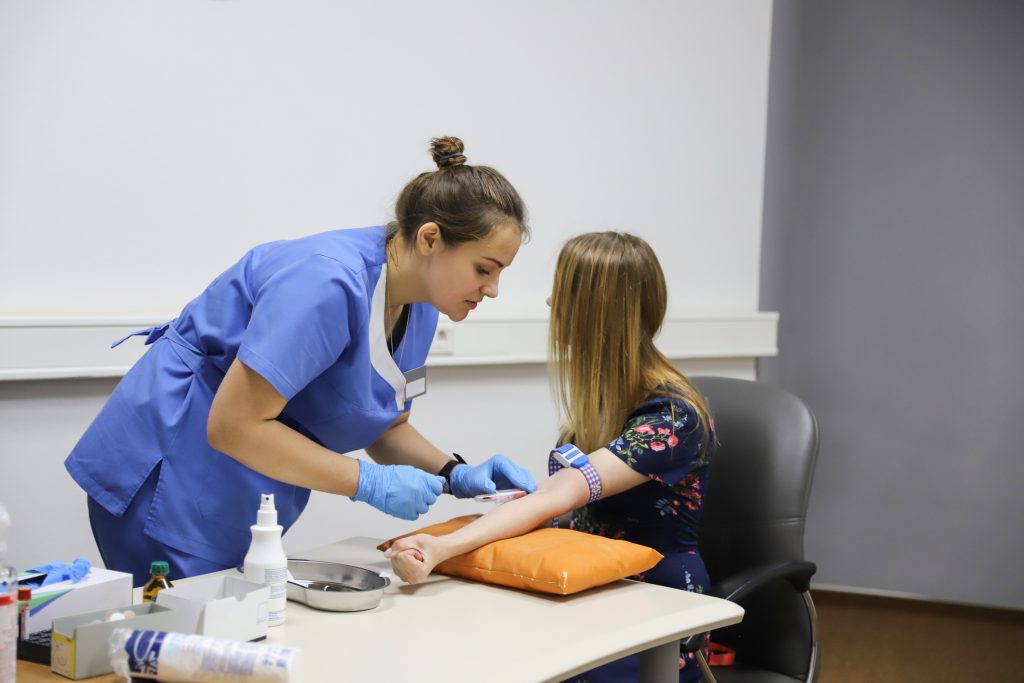Little Known Questions About Northeast Medical Institute - New Haven Campus Phlebotomy Course & Cna Class.
Little Known Questions About Northeast Medical Institute - New Haven Campus Phlebotomy Course & Cna Class.
Blog Article
4 Simple Techniques For Northeast Medical Institute - New Haven Campus Phlebotomy Course & Cna Class
Table of ContentsThe Best Strategy To Use For Northeast Medical Institute - New Haven Campus Phlebotomy Course & Cna Class3 Simple Techniques For Northeast Medical Institute - New Haven Campus Phlebotomy Course & Cna ClassThe Best Strategy To Use For Northeast Medical Institute - New Haven Campus Phlebotomy Course & Cna ClassNortheast Medical Institute - New Haven Campus Phlebotomy Course & Cna Class Can Be Fun For EveryoneThe Facts About Northeast Medical Institute - New Haven Campus Phlebotomy Course & Cna Class RevealedThe smart Trick of Northeast Medical Institute - New Haven Campus Phlebotomy Course & Cna Class That Nobody is Discussing
However, using such devices should be gone along with by other infection prevention and control practices, and training in their use. Not all security tools are suitable to phlebotomy. Before choosing a safety-engineered tool, users ought to completely examine readily available gadgets to identify their suitable use, compatibility with existing phlebotomy practices, and efficacy in safeguarding staff and clients (12, 33).For settings with reduced sources, price is a driving consider purchase of safety-engineered gadgets - Phlebotomy Classes. Where safety-engineered gadgets are not available, skilled use a needle and syringe is appropriate. Unintended exposure and specific info about an incident must be tape-recorded in a register. Assistance services need to be advertised for those who go through accidental direct exposure.
In the blood-sampling space for an outpatient department or clinic, provide a comfortable reclining couch with an arm remainder.
Fascination About Northeast Medical Institute - New Haven Campus Phlebotomy Course & Cna Class
Make sure that the indications for blood tasting are clearly specified, either in a created protocol or in documented guidelines (e.g. in a research laboratory form). At all times, comply with the methods for infection prevention and control listed in Table 2.2. Infection avoidance and control practices. Gather all the devices required for the treatment and location it within secure and very easy reach on a tray or trolley, ensuring that all the products are plainly visible.
Where the person is adult and mindful, follow the steps outlined below. Introduce yourself to the patient, and ask the individual to specify their complete name. Check that the laboratory kind matches the individual's identity (i.e. match the client's information with the lab form, to make sure accurate identification). Ask whether the license has allergies, anxieties or has ever passed out during previous shots or blood attracts.
Make the client comfortable in a supine placement (ideally). Location a tidy paper or towel under the client's arm. Talk about the examination to be performed (see Annex F) and acquire verbal consent. The individual has a right to reject an examination at any type of time prior to the blood sampling, so it is essential to guarantee that the individual has comprehended the treatment.
Northeast Medical Institute - New Haven Campus Phlebotomy Course & Cna Class Fundamentals Explained
Expand the patient's arm and check the antecubital fossa or forearm. Locate a capillary of an excellent dimension that is visible, straight and clear.
DO NOT put the needle where capillaries are drawing away, because this enhances the opportunity of a haematoma. Situating the capillary will certainly help in determining the right dimension of needle.
Haemolysis, contamination and existence of intravenous liquid and medication can all modify the results (39. Nursing personnel and medical professionals might access central venous lines for specimens complying with protocols. Specimens from main lines lug a threat of contamination or incorrect laboratory examination outcomes. It serves, but not perfect, to attract blood specimens when first introducing an in-dwelling venous gadget, before connecting the cannula to the intravenous liquids.
Some Ideas on Northeast Medical Institute - New Haven Campus Phlebotomy Course & Cna Class You Need To Know
Permit the location to completely dry. Failing to permit sufficient contact time increases the danger of contamination. DO NOT touch the cleansed site; specifically, DO NOT position a finger over the vein to direct the shaft of the exposed needle. It the site is touched, repeat the sanitation. Carry out venepuncture as adheres to.
Ask the patient to create a hand so the capillaries are extra famous. Enter the vein swiftly at a 30 level angle or less, and remain to introduce the needle along the vein at the easiest angle of entrance - Phlebotomy Courses. As soon as adequate blood has actually been collected, release the tourniquet prior to withdrawing the needle
Northeast Medical Institute - New Haven Campus Phlebotomy Course & Cna Class - Questions
Withdraw the needle carefully and use mild pressure to the site with a clean gauze or dry cotton-wool round. Ask the individual to hold the gauze or cotton woollen in position, with the arm prolonged and elevated. Ask the client NOT to flex the arm, since doing so triggers a haematoma.

The 4-Minute Rule for Northeast Medical Institute - New Haven Campus Phlebotomy Course & Cna Class
Do not push the syringe plunger due to the fact that extra stress raises the danger of haemolysis. Where possible, keep the tubes in a rack and move the shelf in the direction of you. Infuse downwards into the appropriate coloured stopper. DO NOT remove the stopper because it will certainly launch the vacuum. If the sample tube does not have a rubber stopper, inject extremely slowly into television as reducing the pressure and speed utilized to transfer the specimen reduces the danger of haemolysis.

Report this page